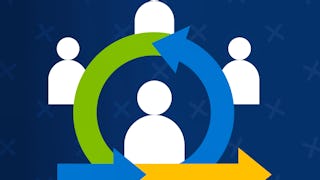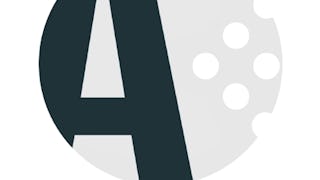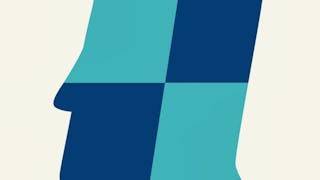While agile has become the de facto standard for managing digital innovation teams, many wonder if they’re doing it ‘right’. Twitter is full of jokes about how teams say they do agile but don’t ‘really’ do it. The reality is that getting the most out of agile is less about observing specific procedures and more about how a team focuses and measures their progress.

Unlock access to 10,000+ courses with Coursera Plus. Start 7-Day free trial.

Managing an Agile Team
This course is part of multiple programs.

Instructor: Alex Cowan
70,067 already enrolled
Included with
(1,364 reviews)
What you'll learn
How to select and test agile practices to adaptively improve your team’s practice of agile
How to create an agile team charter that aligns your team’s focus with company strategy while leaving it free to work creatively
How to facilitate retrospectives with your team to iteratively, collaboratively improve your practice of agile
How to support your team’s transition to agile
Skills you'll gain
- Prioritization
- Backlogs
- Kanban Principles
- Team Leadership
- Sales Presentation
- Sprint Retrospectives
- Innovation
- Process Improvement
- Goal Setting
- Agile Methodology
- Team Performance Management
- Team Management
- Team Building
- Lean Methodologies
- Agile Software Development
- Discussion Facilitation
- Selling Techniques
- Agile Project Management
Details to know

Add to your LinkedIn profile
See how employees at top companies are mastering in-demand skills

Build your subject-matter expertise
- Learn new concepts from industry experts
- Gain a foundational understanding of a subject or tool
- Develop job-relevant skills with hands-on projects
- Earn a shareable career certificate

There are 4 modules in this course
This week we’ll introduce the four fundamental jobs of software development to help you define what’s important to your team and, hence, which of the many agile practices might make the most sense for you to try out. Then we’ll talk about achieving alignment with your company while maintaining autonomy through an agile team charter. We’ll close by stepping through the leading agile methodologies--Scrum, XP, and kanban. You’ll finish the week with an understanding of how to pair what’s important to your team with the best of what agile has to offer.
What's included
20 videos2 readings1 assignment1 discussion prompt
One of the most critical focal points for any team is facilitating a focus on outcomes over output. Without this, you’ll never graduate from responding to requests about your to-do list of output to driving better user outcomes that move the needle for your company. This week, you’ll learn how to define and prioritize what’s important to your team in the areas of learning and deciding, and to pair those with relevant agile practices from Scrum, XP, and kanban.
What's included
22 videos1 assignment1 discussion prompt
This week we’ll dive into the jobs of building software and the core management jobs in running an agile team. Agile--and XP in particular--offers a rich body of work on specific coding practices. We’ll step through a few of the most prominent and discuss key linkages with the other concepts and practices you’ve learned. On the job of managing, we’ll dive deeper into what that means and what works in an agile context.
What's included
23 videos1 assignment1 discussion prompt
Now that you’ve learned about the four jobs of software development, you’ll have a chance to think through how they relate to your work in this week’s peer-reviewed assignment. You’ll finish the course with a clear plan to accomplish the jobs of learning, deciding, building, and managing for your project.
What's included
6 videos1 peer review
Earn a career certificate
Add this credential to your LinkedIn profile, resume, or CV. Share it on social media and in your performance review.
Instructor

Offered by
Explore more from Design and Product
 Status: Free Trial
Status: Free TrialDuke University
 Status: Free Trial
Status: Free TrialUniversity of Colorado System
 Status: Free Trial
Status: Free TrialUniversity of Virginia
 Status: Preview
Status: Preview
Why people choose Coursera for their career




Learner reviews
1,364 reviews
- 5 stars
77.59%
- 4 stars
17.93%
- 3 stars
2.92%
- 2 stars
0.73%
- 1 star
0.80%
Showing 3 of 1364
Reviewed on Aug 8, 2023
Greetings, I have enjoyed this course so much. it was easy to follow and full of rich information that was light to digest.Extremely grateful for the opportunity, Thank you.
Reviewed on Jan 17, 2021
Lots of good content and balance of expert interviews and examples from Spotify and Salesforce. One of my favorite courses in the Digital Product Management Specialization.
Reviewed on Sep 22, 2019
Excellent material & experiences shared throughout the course. highly recommended for people planning to transition from traditional methodologies to agile methodologies.

Open new doors with Coursera Plus
Unlimited access to 10,000+ world-class courses, hands-on projects, and job-ready certificate programs - all included in your subscription
Advance your career with an online degree
Earn a degree from world-class universities - 100% online
Join over 3,400 global companies that choose Coursera for Business
Upskill your employees to excel in the digital economy
Frequently asked questions
To access the course materials, assignments and to earn a Certificate, you will need to purchase the Certificate experience when you enroll in a course. You can try a Free Trial instead, or apply for Financial Aid. The course may offer 'Full Course, No Certificate' instead. This option lets you see all course materials, submit required assessments, and get a final grade. This also means that you will not be able to purchase a Certificate experience.
When you enroll in the course, you get access to all of the courses in the Specialization, and you earn a certificate when you complete the work. Your electronic Certificate will be added to your Accomplishments page - from there, you can print your Certificate or add it to your LinkedIn profile.
Yes. In select learning programs, you can apply for financial aid or a scholarship if you can’t afford the enrollment fee. If fin aid or scholarship is available for your learning program selection, you’ll find a link to apply on the description page.
More questions
Financial aid available,
¹ Some assignments in this course are AI-graded. For these assignments, your data will be used in accordance with Coursera's Privacy Notice.

